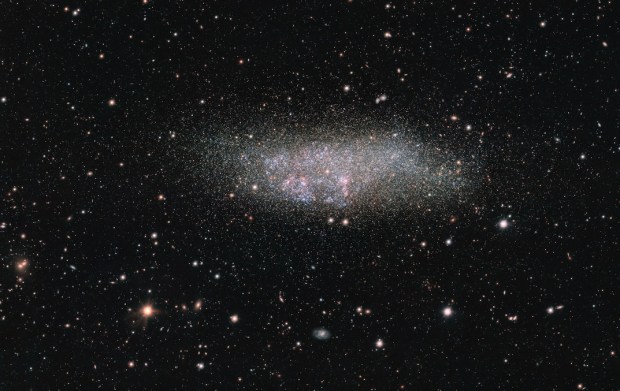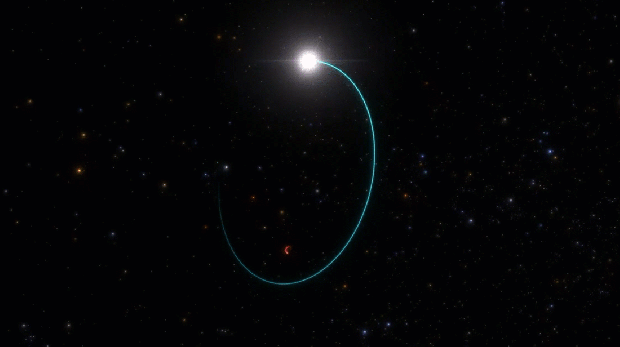
The barred irregular galaxy Wolf-Lundmark-Melotte (WLM) is a member of the Local Group of galaxies. This collection of more than 100 stellar systems includes the Milky Way and the Andromeda Galaxy (M31). German astronomer Max Wolf discovered WLM in 1909. In 1926, Swedish astronomer Knut Lundmark and British astronomer Philibert Melotte determined its nature. It lies some 3.2 million light-years away and is considered a low-mass galaxy. Of course, that’s relative. Its total mass is on the order of 430 million solar masses.
WLM lies in the constellation Cetus the Whale. It has an apparent size of 11.5′ by 4.2′ and glows at magnitude 11.2, so you can see it from a dark site through an 8-inch telescope. To find it, use an eyepiece that will give a 1/2° field of view, and point it a bit more than 10° west-northwest of Diphda (Beta [β] Ceti). Keep in mind that WLM has a low surface brightness. A good strategy for revealing it against the surrounding darkness is to center it (or the position you think it’s at) and tap the telescope’s tube ever so slightly.
Because telescopes sensitive to ultraviolet radiation have revealed clumps of hot new stars, astronomers think WLM is still in the star-formation stage. These regions, mainly in the southern half of the galaxy, range from 20 to 100 light-years across.
In 1994, American astronomer Andrew Dolphin, now at the University of Arizona, used the Hubble Space Telescope to show that around half of all the star formation in this galaxy occurred roughly 13 billion years ago. Because it’s at the edge of the Local Group, WLM has avoided encounters with other galaxies. That makes it valuable to researchers to compare with other nearby galaxies.









